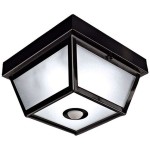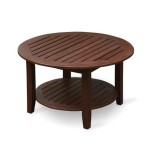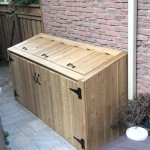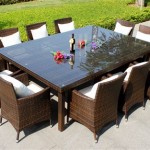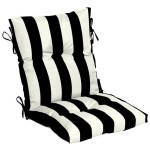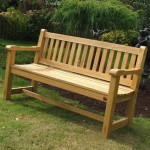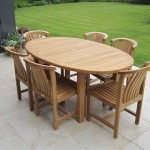Best Outdoor Furniture for Rain: A Comprehensive Guide
Outdoor furniture enhances the enjoyment of patios, decks, and gardens. However, selecting furniture that withstands rain and other weather conditions is crucial for longevity and minimizing maintenance. This article explores various materials and features that contribute to rain-resistant outdoor furniture, enabling informed purchasing decisions.
Understanding Material Properties and Rain Resistance
The primary factor determining outdoor furniture's suitability for rainy climates is the material composition. Certain materials inherently resist water absorption, warping, and degradation caused by prolonged exposure to moisture. Evaluating the strengths and weaknesses of different materials is essential for selecting appropriate outdoor furniture.
Teak: Teak is a hardwood renowned for its natural oils and dense grain, making it highly resistant to water damage, rot, and insects. This inherent water resistance is due to the high concentration of natural oils that act as a protective barrier, preventing water from penetrating the wood. Teak can withstand prolonged exposure to rain without significant deterioration. Over time, untreated teak will weather to a silver-gray patina, which is a desirable aesthetic for many. However, this change does not compromise the wood's structural integrity. Regular cleaning can help maintain its original color, if desired.
Aluminum: Aluminum is a lightweight and rust-proof metal, making it an excellent choice for outdoor furniture intended for rainy environments. Unlike steel, aluminum does not corrode when exposed to moisture. It is typically powder-coated for added protection and aesthetic appeal. Powder coating provides a durable and weather-resistant finish that prevents chipping, scratching, and fading. Aluminum furniture is relatively low-maintenance and can be easily cleaned with soap and water.
Wrought Iron: While visually appealing, wrought iron requires protective coatings to prevent rust. Without appropriate treatment, exposure to rain will inevitably lead to corrosion. Proper powder coating or painting can significantly extend the lifespan of wrought iron furniture in wet conditions. Regular maintenance, including inspecting for and addressing any chips or scratches in the protective coating, is crucial to prevent rust formation. Wrought iron furniture is generally heavier than other options, providing stability in windy conditions, but this also makes it more difficult to move for storage or cleaning.
Resin Wicker: Resin wicker, often made from polyethylene or PVC, is a synthetic material designed to mimic the look of natural wicker while offering superior weather resistance. Unlike natural wicker, resin wicker is impervious to water damage, mold, and mildew. It is also resistant to fading and cracking, making it a durable choice for outdoor furniture in rainy climates. Resin wicker furniture is lightweight and easy to clean, requiring minimal maintenance. It is available in a variety of styles and colors, offering versatility in design.
Plastic (Polypropylene): Polypropylene is a type of plastic that is often used in outdoor furniture due to its water resistance and durability. It is lightweight, easy to clean, and resistant to fading and cracking. Polypropylene furniture is also relatively inexpensive, making it a budget-friendly option. However, it may not be as aesthetically pleasing as other materials, and it can become brittle in extreme temperatures. High-quality polypropylene furniture typically contains UV inhibitors to protect against sun damage.
Stone and Concrete: These materials are inherently weather-resistant and can withstand prolonged exposure to rain without significant damage. Stone and concrete furniture is heavy and durable, making it ideal for areas prone to strong winds. However, these materials can be porous and may require sealing to prevent staining and water absorption, which can lead to cracking in freezing temperatures. Stone and concrete furniture can also be uncomfortable to sit on without cushions.
Key Design Features for Rain Resistance
Beyond the material itself, the design of outdoor furniture plays a significant role in its ability to withstand rain. Certain design features help to minimize water accumulation, promote drainage, and prevent damage.
Slatted Designs: Slatted designs for chairs, benches, and tables allow water to drain freely, preventing puddling and reducing the risk of water damage. The spacing between the slats ensures that water does not accumulate on the surface, minimizing the potential for warping, rotting, or corrosion. Slatted designs are particularly effective for wooden furniture, as they allow air to circulate and dry the wood more quickly.
Mesh Fabrics: Furniture made with mesh fabrics, such as textilene, allows water to pass through easily, preventing water from pooling on the surface. Mesh fabrics are also quick-drying and resistant to mold and mildew. This makes them an excellent choice for cushions, slings, and other seating surfaces that are exposed to rain. Mesh fabrics are typically made from synthetic materials, such as polyester or PVC, which are durable and weather-resistant.
Angled Surfaces: Angled surfaces on furniture, such as chair backs and table tops, encourage water to run off quickly, preventing water from accumulating and potentially damaging the material. This design feature is particularly useful for furniture made from materials that are susceptible to water damage, such as wood or metal. Angled surfaces also reduce the risk of standing water, which can attract insects and promote the growth of algae.
Rust-Resistant Hardware: The hardware used to assemble outdoor furniture, such as screws, bolts, and hinges, should be made from rust-resistant materials, such as stainless steel or aluminum. This prevents corrosion and ensures that the furniture remains structurally sound over time. Rusting hardware can weaken the joints and connections, leading to premature failure of the furniture.
Protective Finishes: Applying protective finishes, such as sealants, paints, or powder coatings, can significantly enhance the water resistance of outdoor furniture. These finishes create a barrier that prevents water from penetrating the material and causing damage. Sealants are particularly effective for wood furniture, while powder coatings are commonly used for metal furniture. Regular maintenance, including reapplying the finish as needed, is essential to maintain its protective properties.
Cushion and Upholstery Considerations
Outdoor furniture often includes cushions and upholstery, which require careful consideration when selecting furniture for rainy climates. The type of fabric and filling used in cushions can significantly impact their ability to withstand water damage and maintain their comfort and appearance.
Solution-Dyed Acrylic Fabrics: Solution-dyed acrylic fabrics, such as Sunbrella, are highly resistant to fading, staining, and water damage. The color is integrated into the fibers during the manufacturing process, making it resistant to fading from sun exposure and cleaning. These fabrics are also water-repellent and quick-drying, making them an excellent choice for outdoor cushions and upholstery. Solution-dyed acrylic fabrics are also resistant to mold and mildew, which can be a problem in humid environments.
Polyester Fabrics with Water-Repellent Coatings: Polyester fabrics can be treated with water-repellent coatings to enhance their resistance to water damage. These coatings create a barrier that prevents water from penetrating the fabric, keeping the cushions dry and comfortable. However, the water-repellent coating may wear off over time, requiring reapplication. Polyester fabrics are also relatively inexpensive and easy to clean.
Quick-Drying Foam Fillings: Using quick-drying foam fillings, such as reticulated foam or open-cell foam, is essential for outdoor cushions. These types of foam allow water to drain quickly, preventing the cushions from becoming waterlogged and promoting faster drying. Quick-drying foam fillings also resist mold and mildew growth, which can cause unpleasant odors and discoloration. Closed-cell foam, while waterproof, can trap water and lead to mildew if the fabric covering is not breathable.
Storage Options: When not in use, storing cushions and upholstery indoors or in a waterproof container can significantly extend their lifespan and protect them from rain and other weather conditions. This is particularly important for cushions made from materials that are not highly water-resistant. Outdoor storage boxes are available in a variety of sizes and styles, providing a convenient and effective way to protect cushions and other outdoor accessories.
Mesh Bottoms: Cushions with mesh bottoms allow water to drain freely, preventing water from accumulating inside the cushion. This design feature is particularly useful for cushions that are exposed to rain on a regular basis. Mesh bottoms also promote air circulation, which helps to dry the cushions more quickly and prevent the growth of mold and mildew.
Choosing the best outdoor furniture for rainy climates requires careful consideration of material properties, design features, and cushion considerations. Selecting furniture made from water-resistant materials, incorporating design elements that promote drainage, and using appropriate cushions and upholstery will ensure that your outdoor furniture remains durable, comfortable, and aesthetically pleasing for years to come.

What Is The Best Outdoor Furniture For Rainy Weather

Best Outdoor Furniture For Rainy Weather Bel

Highly Rated Water Resistant Outdoor Patio Furniture

The Best Outdoor Furniture For Rain Arboretum Your Home Garden Heavenarboretum Heaven

The Best Weather Proof Garden Furniture

Best Patio Furniture For Rainy Weather Sonoma Backyard

The Best Patio Furniture And How To Shop For It Reviews By Wirecutter

The Best Patio Furniture And How To Shop For It Reviews By Wirecutter

The Best Metal Garden Furniture To Buy In 2024

17 Best Rattan Garden Furniture To Buy In 2024

